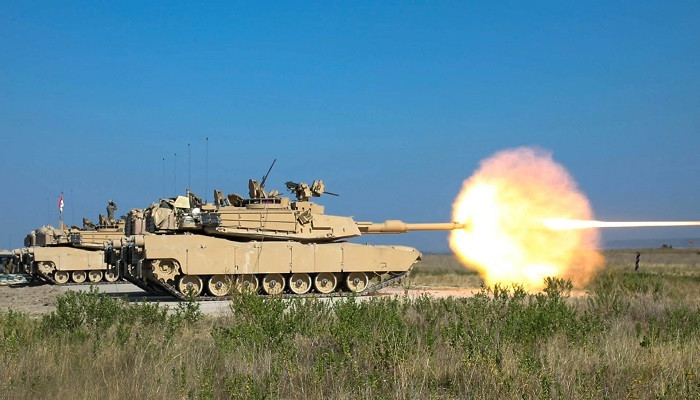Biden Just Promised Abrams Tanks to Ukraine. They Won't Get There for Months
 The Biden Administration reversed course on its policy stance on whether to send M1 Abrams tanks to Ukraine after publicly arguing for weeks that such a move would hinder Ukrainian forces more than help. President Joe Biden announced Wednesday the U.S. will provide 31 American-made battle tanks as part of a long-term plan to strengthen the Ukrainian army with advanced weaponry to fight invading Russian forces, which occupy vast swaths of eastern and southern Ukraine. The policy turnaround is the latest sign the White House expects the conflict in Ukraine to last for many months or years, and signals Washington is prepared to support Ukraine in the fight for its duration. The influx of armor will “enhance Ukraine’s capacity to defend its territory and achieve its strategic objectives,” Biden said, calling Abrams “the most capable tanks in the world.” “That’s what this is about,” he said, “helping Ukraine defend and protect Ukrainian land.” “We’re talking months, as opposed to weeks,” a senior Administration official told reporters ahead of Biden’s announcement. “If we do not have it readily within U.S. stocks, then we go the procurement route to make sure that we can procure the right capability for Ukraine.” Under this longer timeline, the new Abrams tanks aren’t likely to arrive ahead of an expected spring offensive by Russian forces. Ukraine has been pleading the U.S. and Western partners for new armor since the early stages of Russian President Vladimir Putin’s invasion last February. The Ukrainian military currently operates a Soviet-era tank fleet, which is expected to be over-matched in the coming months when Russia’s mobilizes its offensive in the east. The Abrams tank weighs more than 60 tons with a 120 millimeter cannon that can hit targets a mile away. At around 45 miles per hour, it’s faster than older tanks with specialized armor-plating designed to withstand direct hits with antitank weapons. Administration officials said the Ukrainian troops’ Abrams training will take place “outside” Ukraine, but wouldn’t say whether it will be held in United States, like the ongoing Patriot system training. “Delivering these tanks to the field is going to take time,” Biden said in his speech at the White House. “Time that we’ll use to make sure the Ukrainians are fully prepared.” As recently as last week, the Biden Administration had insisted the Abrams tank was too complicated, too expensive, and too difficult to train Ukrainian forces to use. A major issue they cited is that the turbine engine guzzles jet fuel rather than diesel like the German-made Leopard tank. The Pentagon contended that Leopards consume less fuel, are easier to maintain, and, perhaps most importantly, are already widely available across Europe because more than a dozen European nations operate them and many are willing to send them to Ukraine. In the end, however, the White House determined the maintenance and logistics concerns weren’t significant enough barriers to prevent sending the Abrams, senior Administration officials said. “We are supporting the Ukrainians to be able to synchronize all of their different capabilities… in a unified way that will enable them to retake territory,” the senior official said. Ben Hodges, a retired lieutenant general who once commanded all U.S. Army forces in Europe, says the decision to send Abrams is welcome news but should have come sooner. “Unfortunately, the amount of time it took to get to this decision—and the way it is going to be implemented—does not convey a sense of urgency by the Administration or the Pentagon to help Ukraine win,” he says. “It feels more like the path of helping Ukraine avoid losing.” |

Elon Musk Makes History as the First Individual to Hit a $600 Billion Net Worth, Leaving Cubana Chiefpriest and 30BG Members Behind
11800:41
Velayati says ‘Trump plan’ for Caucasus mirrors Zangezur corridor
122Yesterday, 22:56
Trump vows retaliation after three Americans killed in Syria attack
35614.12.2025, 19:47
UNESCO recognizes Italian cuisine as intangible world heritage
38314.12.2025, 16:42
The Walt Disney Company and OpenAI reach landmark agreement to bring beloved characters from across Disney’s brands to Sora
68311.12.2025, 21:48
Miss Finland stripped of crown following apparent racist gesture (photo)
76211.12.2025, 17:35
